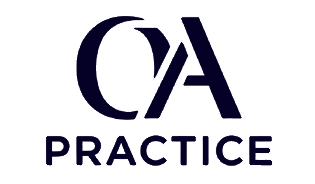D236 Pathophysiology - Set 2 - Part 1
Test your knowledge of technical writing concepts with these practice questions. Each question includes detailed explanations to help you understand the correct answers.
Question 1: A patient develops confusion and muscle twitching after prolonged vomiting. Which acid base disturbance most likely explains these neurological symptoms resulting from excessive stomach acid loss?
Question 2: When examining inflammatory response phases, which event occurs first after tissue injury to initiate the healing cascade?
Question 3: A couple's first child has cystic fibrosis though neither parent shows symptoms. What risk exists for their next pregnancy?
Question 4: Which genetic technology helps identify individuals at risk for adverse drug reactions before prescribing medications based on their genetic makeup?
Question 5: During translation at ribosomes, what determines the specific sequence of amino acids that will form the final protein structure?
Question 6: A woman experiences heavy bleeding and severe pain during menstruation. Imaging reveals endometrial glands growing within the uterine muscle wall. What condition is this?
Question 7: Which bone cells become trapped in the matrix they produce and maintain bone tissue throughout life by sensing mechanical stress?
Question 8: What distinguishes volatile acids from nonvolatile acids in terms of how the body eliminates them to maintain pH balance?
Question 9: A researcher studies how environmental factors interact with multiple genes to cause diabetes. What type of inheritance pattern is being investigated?
Question 10: During acute inflammation, which cells are typically the first to arrive at injury sites to begin phagocytosis of bacteria and debris?
Question 11: What mechanism explains why identical twins might show different disease severity despite having the exact same genetic mutation?
Question 12: A patient cannot produce adequate amounts of bicarbonate to neutralize metabolic acids. Which organ system is most likely failing?
Question 13: Which type of RNA molecule undergoes splicing to remove introns before being translated into proteins at the ribosome?
Question 14: During fracture healing, what substance primarily forms the initial hematoma that provides the foundation for subsequent repair processes?
Question 15: A child shows developmental delays and seizures from a mitochondrial disorder. Through which parent was this most likely inherited?
Question 16: What cellular structure contains digestive enzymes that break down pathogens after phagocytic cells engulf them during immune responses?
Question 17: Which joint disease primarily results from autoimmune attack on synovial membranes rather than mechanical wear of cartilage?
Question 18: During gene expression regulation, which DNA regions decrease transcription rates when bound by repressor proteins?
Question 19: What explains why carriers of sickle cell trait have survival advantage in malaria endemic regions despite carrying a disease allele?
Question 20: A patient experiences bone pain and fractures despite normal calcium intake. Testing reveals excessive osteoclast activity. What medication type would help?
Need Guaranteed Results?
Our exam support service guarantees you'll pass your OA on the first attempt. Pay only after you pass!
Get Exam Support